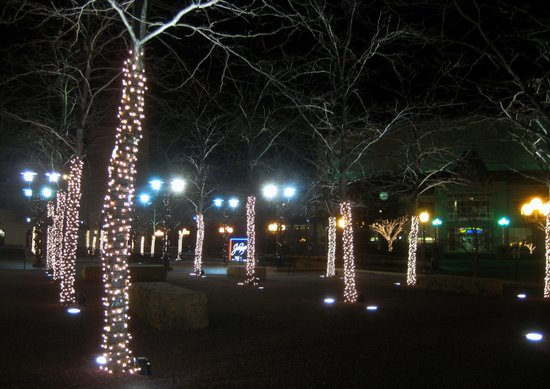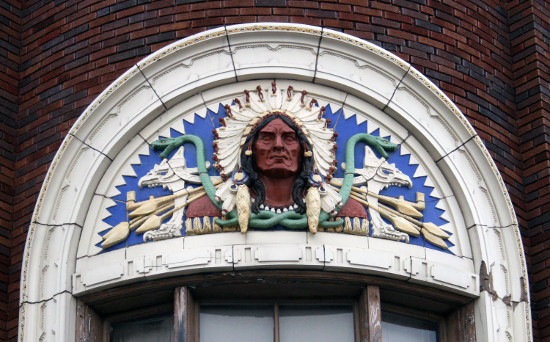Just north of the corner of 18th Street and Middle Road in Bettendorf is - strangely - a large head made of bark in an open field. More than 13 feet tall, it's hard to miss. What makes the sculpture feel truly immense, however, is how the artist has fulfilled her goal of "giving the Earth a voice" through this work.
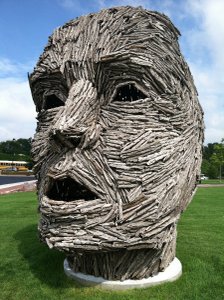 The sculpture, created by Sarah Deppe - a 24-year-old artist from Maquoketa, Iowa - is meant to represent the natural world. Its surface is made of cottonwood bark found on the ground. As Deppe has written: "I incorporate bark and wood because I believe it is less detrimental for the environment than other mediums. I feel as though I am simply borrowing from nature, and it will be returned to the Earth as it decomposes off my sculptures."
The sculpture, created by Sarah Deppe - a 24-year-old artist from Maquoketa, Iowa - is meant to represent the natural world. Its surface is made of cottonwood bark found on the ground. As Deppe has written: "I incorporate bark and wood because I believe it is less detrimental for the environment than other mediums. I feel as though I am simply borrowing from nature, and it will be returned to the Earth as it decomposes off my sculptures."
The artwork's title, Exhaling Dissolution, refers to the pollution constantly being spewed into the environment.
Inspired by Deppe's research into deforestation, the artwork took four months to plan and construct. Since its completion in 2010, it has been displayed on the Northern Iowa University campus and along the Riverwalk in the Port of Dubuque before being installed in Bettendorf on June 29, 2012. The artwork will be displayed in Faye's Field for only one year - through June 2013.

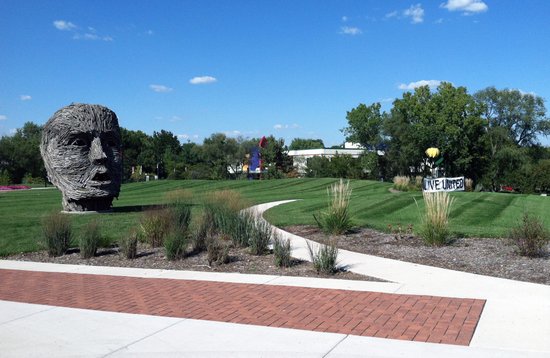
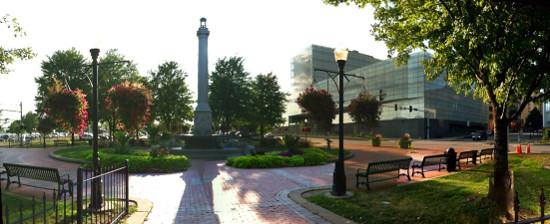
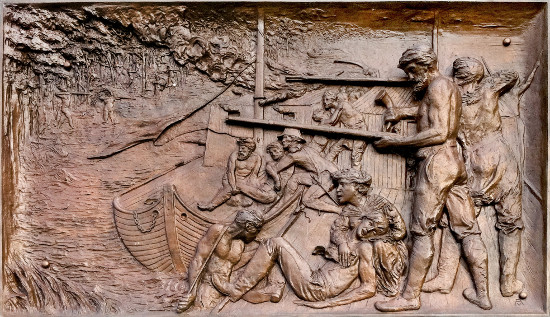
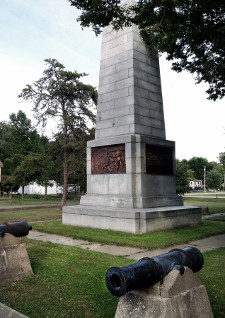 Campbell's Island is just north of East Moline, accessible from Illinois Route 84. The island is named for U.S. Lieutenant John Campbell, who was leading three gunboats past it on July 19, 1814, when his boat was grounded during a storm. While vulnerable, they were attacked by an estimated 500 Sauk warriors allied with the British Army. The attack led by Black Hawk and the ensuing fight became known as the Battle of Rock Island Rapids - one of the most western battles of the War of 1812. In all, there were between 35 and 37 casualities (depending on the source) among Campbell's men and their families - including the deaths of 14 men, a woman, and a child.
Campbell's Island is just north of East Moline, accessible from Illinois Route 84. The island is named for U.S. Lieutenant John Campbell, who was leading three gunboats past it on July 19, 1814, when his boat was grounded during a storm. While vulnerable, they were attacked by an estimated 500 Sauk warriors allied with the British Army. The attack led by Black Hawk and the ensuing fight became known as the Battle of Rock Island Rapids - one of the most western battles of the War of 1812. In all, there were between 35 and 37 casualities (depending on the source) among Campbell's men and their families - including the deaths of 14 men, a woman, and a child.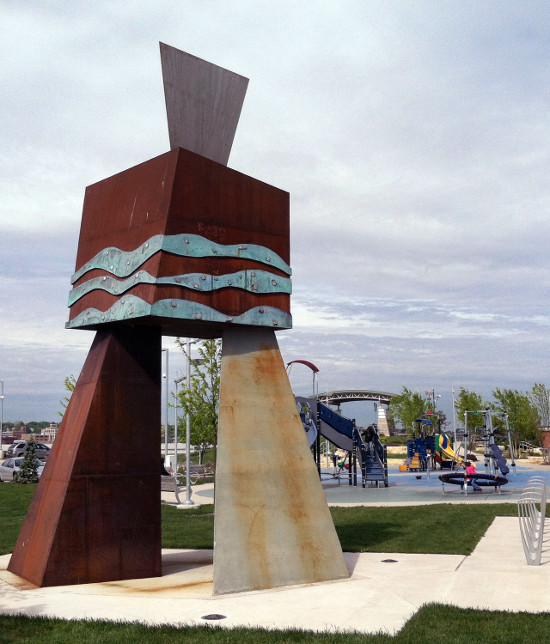
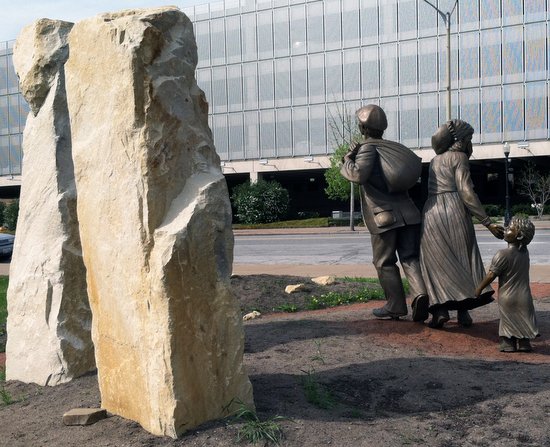
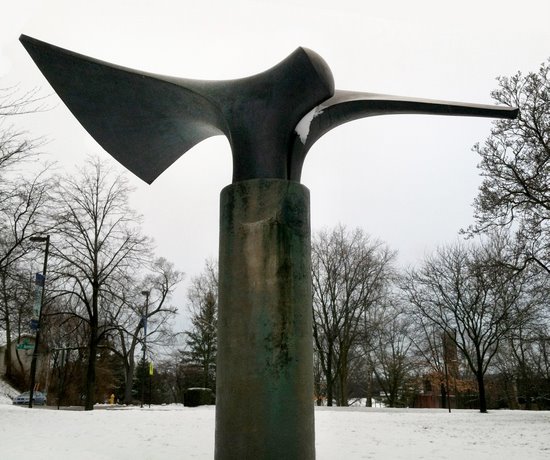
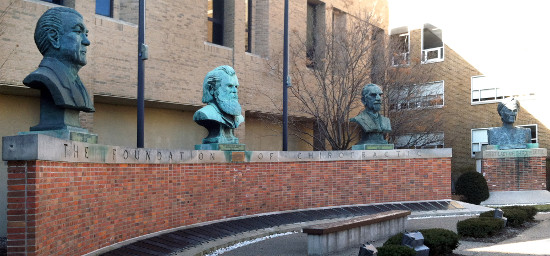
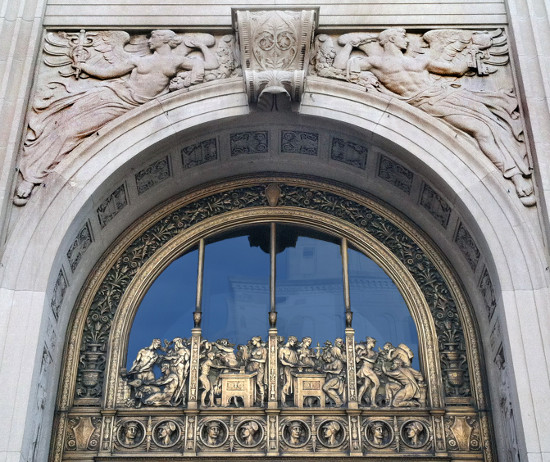
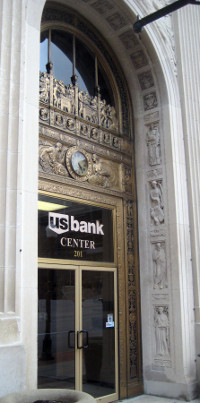 The entrance to the First National Bank Building (now U.S. Bank) at 201 West Second Street in Davenport tells the story of commerce and banking through classical images and symbols. The ancient Greek and Roman references and high artistic level of the entrance tell us, in effect, that banking is an important institution - one of the cornerstones of Western civilization and a pillar of the community.
The entrance to the First National Bank Building (now U.S. Bank) at 201 West Second Street in Davenport tells the story of commerce and banking through classical images and symbols. The ancient Greek and Roman references and high artistic level of the entrance tell us, in effect, that banking is an important institution - one of the cornerstones of Western civilization and a pillar of the community.